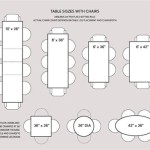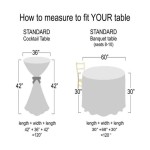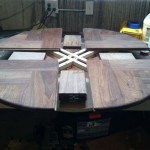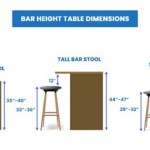The Multifaceted Appeal of the 72 Inch Console Table
A 72-inch console table represents a significant piece of furniture capable of enhancing both the aesthetic appeal and the functional capacity of a living space. Its substantial length provides ample surface area for display, storage, and even serving, making it a versatile addition to various rooms throughout a home. From providing a focal point in an entryway to functioning as a media center in a living room, the 72-inch console table offers a plethora of applications.
The size of a 72-inch console table dictates its suitability for particular spaces. While it may overwhelm a smaller room, it can be ideal for larger hallways, living rooms, dining rooms, or even bedrooms. Careful consideration of the room's dimensions is crucial to ensure the table fits comfortably and doesn't impede movement. A measuring tape and a floor plan are essential tools in determining whether this size of console table is the correct choice for the intended space.
Beyond the size and dimensions of the room, the intended use of the console table should also influence the purchasing decision. Will the table be primarily for display purposes, showcasing decorative items and artwork? Will it be used as a functional storage solution with drawers or shelves? Or is a combination of both desired? Understanding the primary purpose will guide the selection of the material, style, and features best suited to the task.
Material Matters: Durability and Aesthetics
The materials used in the construction of a 72-inch console table significantly impact its durability, aesthetic appeal, and overall cost. Common materials include wood, metal, glass, and stone, each offering unique characteristics. Wood, particularly hardwoods like oak, maple, and walnut, is known for its strength, longevity, and timeless beauty. Metal, such as steel or iron, provides a modern and industrial aesthetic and is highly durable. Glass offers a sleek and minimalist look, while stone, like marble or granite, imparts a sense of luxury and sophistication. The choice of material should align with the desired style and the level of wear and tear the table is expected to endure.
Wooden console tables can be further classified by the type of wood and the finish applied. Solid wood options offer exceptional durability but can be more expensive. Veneered wood provides a similar aesthetic at a lower cost, but may be less resistant to damage. Finishes such as stains, paints, and lacquers can alter the appearance of the wood, allowing it to complement various interior design styles. A natural stain can highlight the wood's grain, while a painted finish can add a pop of color to the room.
Metal console tables often feature powder-coated or brushed finishes, providing resistance to rust and scratches. Powder coating creates a durable and even finish that can withstand daily use. Brushed finishes offer a more subtle and textured look. The combination of metal and wood, such as a metal frame with a wooden tabletop, is a popular choice that blends industrial and rustic design elements. This combination can create a visually appealing contrast and offer the benefits of both materials.
Glass console tables typically feature tempered glass, which is more resistant to breakage than standard glass. Tempered glass is also safer, as it shatters into small, blunt pieces instead of sharp shards. Glass tabletops can be clear, frosted, or tinted, offering varying degrees of transparency and light transmission. Glass console tables are often paired with metal or wooden frames, creating a visually light and airy feel.
Stone console tables, while less common, offer a luxurious and substantial presence. Marble and granite are popular choices, known for their unique veining and durability. Stone tabletops can be polished to a high sheen or left with a more matte finish. Due to their weight, stone console tables often require reinforced frames and careful installation. Stone tabletops are also resistant to heat and scratches, making them suitable for serving or displaying hot items.
Style Considerations: Harmonizing with Existing Décor
The style of a 72-inch console table should complement the existing décor of the room. Common styles include modern, traditional, rustic, industrial, and minimalist, each characterized by distinct design elements. Modern console tables often feature clean lines, geometric shapes, and a focus on functionality. Traditional console tables typically incorporate ornate details, curved legs, and rich finishes. Rustic console tables emphasize natural materials, distressed finishes, and a warm, inviting feel. Industrial console tables showcase exposed metal, raw wood, and a utilitarian aesthetic. Minimalist console tables prioritize simplicity, clean lines, and a lack of ornamentation.
Choosing a style that aligns with the overall aesthetic of the room will create a cohesive and harmonious look. For example, a modern console table with a glass top and metal frame would be well-suited for a contemporary living room. A traditional console table with a dark wood finish and carved details would complement a more formal dining room. A rustic console table with a reclaimed wood top and metal legs would add character to a country-style entryway.
The color of the console table should also be considered in relation to the surrounding colors. Neutral colors, such as white, black, and gray, are versatile and can easily blend with various color schemes. Bold colors, such as blue, green, or yellow, can add a pop of color to the room and create a focal point. Wood tones, such as oak, maple, and walnut, offer warmth and natural beauty.
Hardware, such as knobs, pulls, and hinges, can also contribute to the overall style of the console table. Modern hardware often features sleek and minimalist designs, while traditional hardware incorporates ornate details and antique finishes. The choice of hardware should complement the style of the console table and the existing hardware in the room.
Functionality and Features: Maximizing Utility
Beyond aesthetics, the functionality of a 72-inch console table is a crucial consideration. Features such as drawers, shelves, and cabinets can significantly enhance the table's utility, providing storage and organization options. The number and size of these features should be tailored to the intended use of the table. A console table with drawers can be used to store smaller items, such as keys, mail, or remote controls. Shelves can be used to display books, decorative items, or electronics. Cabinets can provide concealed storage for larger items, such as blankets, pillows, or games.
The placement of the drawers, shelves, and cabinets should also be carefully considered. Drawers located at the top of the console table can be easily accessed, while drawers at the bottom may be less convenient. Shelves can be open or closed, depending on the desired level of visibility. Cabinets can feature doors with glass panels or solid wood panels, offering different aesthetic effects.
The weight capacity of the console table is another important factor to consider, especially if it will be used to support heavy items, such as a television or a collection of books. The weight capacity should be clearly stated by the manufacturer and should be sufficient to accommodate the intended load. Overloading the console table can lead to damage or instability.
Some console tables also feature built-in lighting, which can enhance the display of decorative items and create a warm and inviting ambiance. Lighting can be integrated into the shelves or cabinets, providing targeted illumination. The lighting can be powered by batteries or plugged into an electrical outlet.
Another functional consideration is the height of the console table. The height should be appropriate for the intended use of the table. A console table used as an entryway table should be tall enough to provide a convenient surface for placing keys or mail. A console table used as a media center should be low enough to provide a comfortable viewing angle for the television.
Finally, the ease of assembly and maintenance should be considered. Some console tables require complex assembly, while others are delivered fully assembled. The ease of assembly can be a significant factor for those who are not experienced in furniture assembly. The materials used in the construction of the console table will also affect the ease of maintenance. Some materials, such as wood, may require regular cleaning and polishing to maintain their appearance. Other materials, such as metal and glass, may be easier to clean and maintain.

Uttermost Vail 72 Wide Natural Elm Wood Console Table 532f0 Lamps Plus

Baja 72 Rectangular Grey Oak Wood Console Table With Shelf Reviews Crate Barrel

Homeroots Decor 72 Inch X 16 30 Weathered Oak And Antique Silver Console Table Com

72 Amish Mission Spindle Sofa Table Barn Furniture

Theodore Alexander Cb53002 Castle Bromwich 72 X 12 Inch Console Table

72 Inch Rustic Console Table Extra Narrow Sofa Entryway Hallway Foyer With Shelf

97251 Acme Furniture Living Room 72 Inch Console Table

Furniture Lorimer 72 Console Table Style

Magnolia Manor 72 Inch Hall Console Table Steinhafels

Entry Table Console Sofa With Baer Legs Stained Dark Brown 72 Inch








